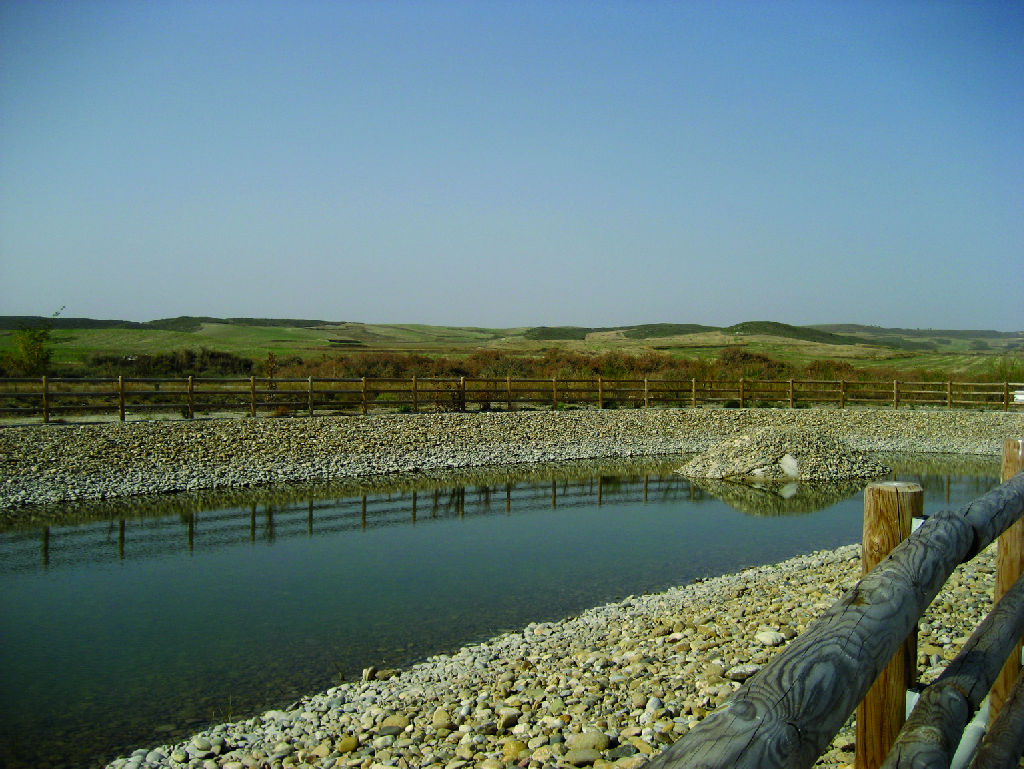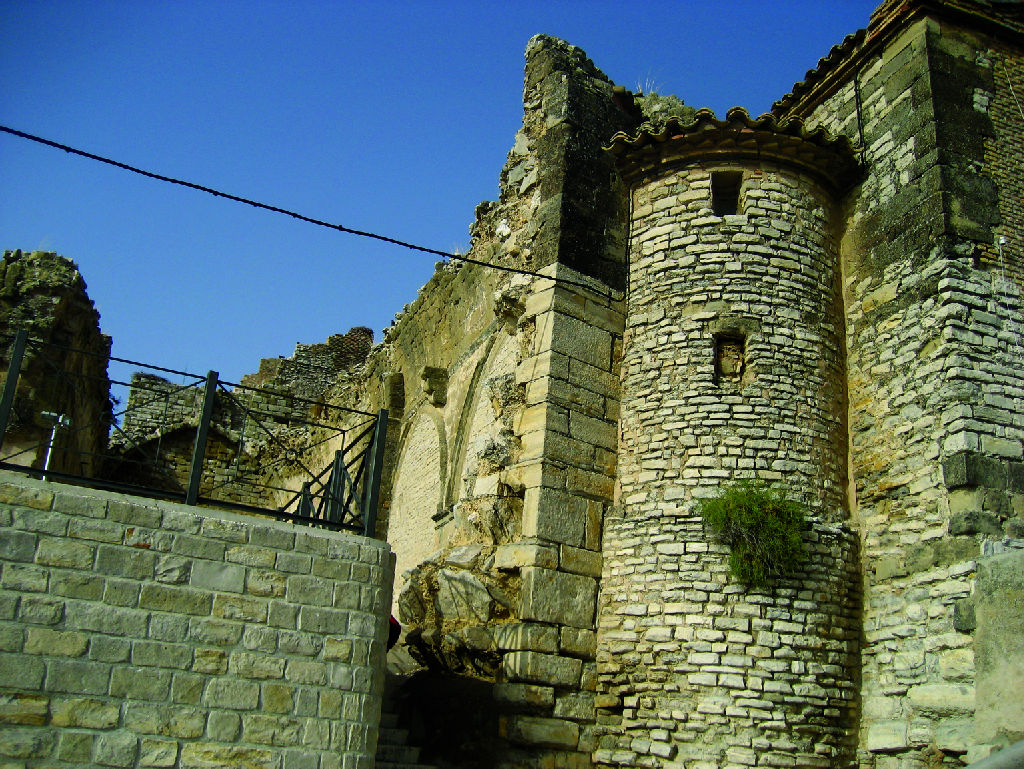- Home
- Rural Development
- Nature Trails
- Nature Trails
- Northeast Sector
- Pedro Saputo
Pedro Saputo Nature Trail
Description

Between two rivers
This route begins with the presence of the old Muslim castle of Almudévar overlooking the scenery from the summit of a hill, and whose ruins house the Cistercian Chapel of the Virgen de La Corona. It runs parallel to the Monegros Canal and the irrigation canal of La Violada. These buildings, which supplied the area with water from the Rivers Gállego and Cinca, are included in the Alto Aragón Irrigation Plan which, since the end of the 19th century, has aimed to improve the economy of the area.
The beginning of this trail, located at the town boundaries, is perfectly signposted along with an information panel showing the trail user the length and key characteristics of the route.
Barely 600 m from the start, you will come to the Tres Caños fountain, of Muslim origin, whose waters are currently used for irrigation purposes. At this point, there is also a recreational area where you can enjoy a rest in the shade and consult the panel that provides information on “Pedro Saputo”, a 19th-century literary character born in Almudévar, to whom the natives of this place owe their nickname of "saputos". The town is also famous for the preparation of its traditional “trenzas” or braids, a typical pastry sweetmeat that is a real pleasure for the most demanding sweet tooth.
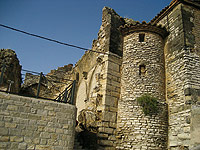
On its way, the route draws closer to the right-hand side bank of the Monegros Canal, which is protected by a pine tree hedgerow that safeguards its banks from erosion. In this section, you can enjoy the views offered by the nearby pre-Pyrenees sierras on the right. The track crosses numerous lanes that provide access to bordering estates, although some old boundary stones pertaining to the El Ebro Water Authorities, placed every 500 m, mark it out unmistakeably. Vines, olives and almond trees follow and, on occasions, you might even have to share the Trail with farm machinery.
The nearby presence of the canal allows bird-lovers to enjoy an ever-changing variety, including the noteworthy almost permanent presence of elusive royal herons (Ardea cinerea). In the meantime, the image of Alcalá de Gurrea silhouetted on the horizon begins to mark the end of the first leg of the Trail, where numerous information points disclose the secrets of the fauna and flora in the area.
When you reach kilometre 7, the Trail changes direction and turns to the left to cross the Monegros Canal and its very busy service road, to then turn to the right once again. From this point onwards, it is accompanied by the waters which, on the left-hand side of the route and almost as far as the end of this Nature Trail, are carried by the new irrigation canal of La Violada, joined from time to time in this last section by the old irrigation canal.
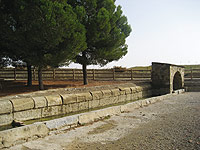
The Trail, which features among its irrigation canals spots specifically designated as resting areas where you can stop, passes a solar power farm and a compost preparation plant, and continues to wind its way, with few changes, across a gentle landscape, where Valsalada can be spotted hidden behind the pine groves. This town is one of the many new towns that were founded in the 40s with the aim of repopulating the least inhabited areas of the Peninsula.
Further ahead, the Magdalena irrigation pool appears, adjacent to another resting area and also very close to a fruit tree experimentation plot. The explanatory panels, which abound along the whole route, provide information both on the birds you can see, including the noteworthy endangered lesser kestrel (Falco naumanni), as well as the main characteristics of the irrigation system, which is of vital importance to the region. These pools, which are used to store rain water, represent one of the most typical structures in its farming areas.
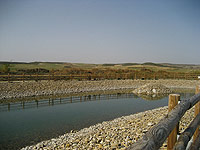
The Violada canal and the Nature Trail continue on their way across harsh gypsiferous lands. Your attention will be drawn to small plots where schoolchildren in the area sponsor and personally care for trees that they themselves have planted so that they manage to survive.
Following the direction of the route, trail users who have opted to complete this Nature Trail by bicycle can enter the nearby bike motocross track or continue their journey as far as the Pyrenees viewpoint, whose panel names the different sierras that can be seen on the horizon. On coming down from the viewpoint, the trail forks into a short section that offers two options: to take the Geological Corridor, a unique area that crosses a cutting where the profile of the terrain is visible, or to continue along the Aromatic Corridor, a gentle pathway sown with thyme (Thymus sp.), rosemary (Rosmarinus sp.), lavender (Lavandula sp.) and other aromatic plants.
When you have passed the only section with a marked gradient, some 600 m, the Trail winds away from the canal in the direction of the new town of El Temple. This last section of the route crosses a shady avenue of mulberries (Morus sp.) which leads to the outskirts of the town where you will find another interpretation panel.
Sites of interest
Profile
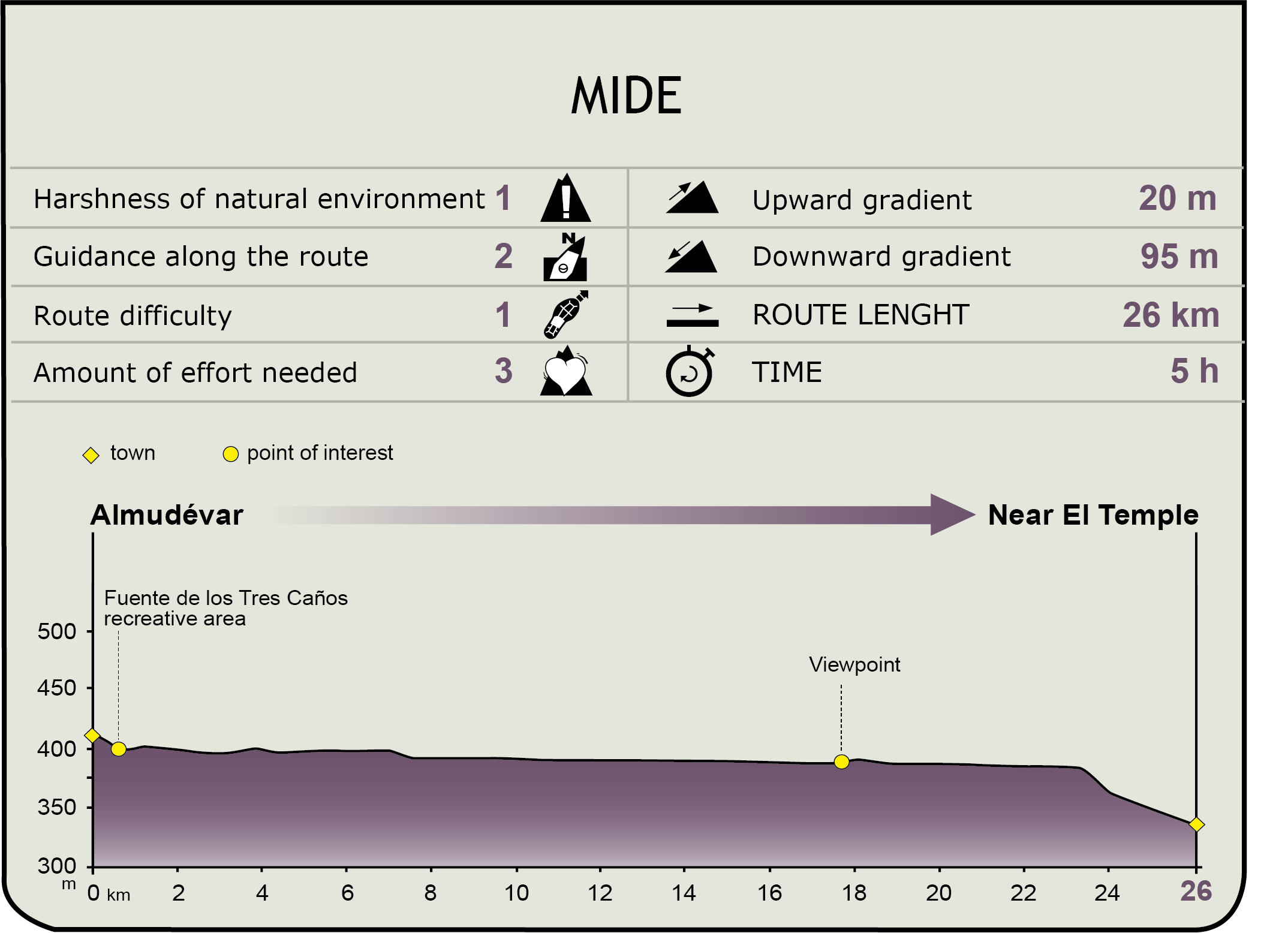
MIDE (Method for the Information of Excursions)
Featured
Further information
Pedro Saputo
Pedro Saputo is a famous character in the costumbrista literature of Aragon who was created by the pen of the author Braulio Foz (Teruel 1791- 1865) and is the protagonist of his work “The Life of Pedro Saputo” (1844).
The adventures of this character, who was born in Almudévar and who walks to the places in this region where history has left glorious reminders, summarise the attitude of the “wise inhabitant of Aragón” who is proud of his land and shows great love for his origins. In a burlesque tone, he believes that natural reason is the only driving force able to ensure the progress of his land.
The inhabitants of Almudévar are nicknamed “saputos” after this character.
Alto Aragón Irrigation Plan
The Alto Aragón Irrigation Plan is an ambitious project whose origins date back to the late 19th century and whose main objective is still to contribute to the progress of the arid lands of Aragón by converting its areas into irrigated land, thanks to the construction of two canals, that of Cinca and that of Monegros.
The former of these two canals would enable the water flows of the Rivers Cinca and Gállego to be joined together and, in this way, to increase the cultivable surface area of this region. The works, which began in 1915, are still not finished.
The source of the Monegros Canal can be found in the Sotonera reservoir and is 133 km long. It is divided into two sections, joining, in the first of them, the 90 km-long Cinca canal, via the so-called “abrazo de Tardienta” or the merger of the two canals. The 37 km-long Violada irrigation canal stands out from its main causeways.
In spite of the number of years that have elapsed since it was started up, the Plan remains unfinished. The construction will be regarded as completed when the waters are successfully carried to the southern Monegros, a matter which still has diverse unresolved aspects.
